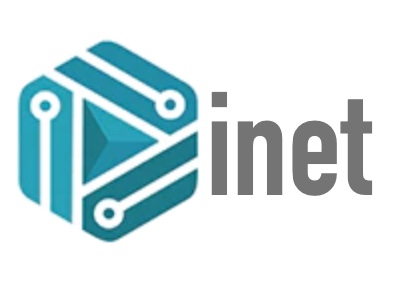Dorking for OSINT: A Comprehensive Analysis
Dorking, often referred to as “Google Dorking,” is a technique where specialized search queries are used to mine data from search engines. While these queries primarily utilize advanced operators within search engines like Google, they’re not limited to it.
1. Understanding “Dorks”:
A “dork” is essentially a search query that leverages advanced operators to filter and refine search results. The objective is to retrieve information that’s generally considered difficult to locate through standard search techniques.
2. Origin of Dorking:
The term “dorking” originates from the early “Google Dorks” that were used to exploit vulnerable websites. These dorks were search queries that could locate websites with specific vulnerabilities in their code or configuration.
3. Application in OSINT:
While initially used for malicious purposes, dorks have become invaluable in Open Source Intelligence (OSINT) investigations for:
- Uncovering Confidential Data: This might include exposed documents, database files, or login portals.
- Locating Specific File Types: For example, finding only PDFs or Excel files related to a particular topic or organization.
- Identifying Vulnerabilities: Highlighting websites that are using outdated systems or have clear security gaps.
4. Examples of Dorking in Practice:
- Searching for Specific File Types:
filetype:pdf "annual report" site:example.com
This would retrieve PDFs titled “annual report” specifically from “example.com.”
- Finding Exposed Directories:
intitle:"index of" "parent directory" site:example.com
This could uncover directories that shouldn’t be publicly accessible.
- Locating Login Portals:
codeinurl:login site:example.com
This dork might identify login portals, which could be further investigated for vulnerabilities.
5. Ethical Considerations:
- Legality and Ethics: While dorking can retrieve public data, it’s essential to operate within legal and ethical boundaries. Finding information doesn’t grant permission to access or misuse it.
- Avoiding Malicious Intent: The primary use of dorks should be for legitimate research or security assessments with proper authorization.
6. Beyond Google:
Dorking isn’t limited to Google. Other search engines like Bing, DuckDuckGo, or specialized platforms like Shodan (for internet-connected devices) have their unique set of operators, expanding the dorking horizon.
7. Staying Updated:
Search engines continually evolve, as do the techniques for dorking. Being a part of the OSINT community, engaging in forums, and participating in challenges can help you stay updated with the latest techniques.
8. Precaution for Websites and Organizations:
Awareness of dorking also means that organizations can proactively test their websites using these techniques to identify and fix potential exposures, emphasizing the importance of regular security audits.
Dorking is a potent technique in the OSINT toolkit. When used responsibly, it can unearth a wealth of information beneficial for researchers, security professionals, and investigators. However, as with all powerful tools, it’s crucial to wield it with knowledge and ethical consideration.
Dorking & OSINT: A Step-by-Step Journey with a Case Study
Imagine a bustling city where secrets are hidden in plain sight. Within its digital alleys and avenues, a hacker named Alex is honing his craft, blending dorking with OSINT to unlock these secrets. Here’s how his story unfolds:
Chapter 1: Discovering the Power of Dorking
Alex, having heard about the power of dorking, starts his journey by visiting a website that aggregates Google Dorks. He realizes that with a few specific queries, he can unearth buried information.
Learning Step 1: Basics of Search Engines
- Understanding basic search operators (intitle:, inurl:, filetype:).
- Practicing regular search to understand the structure of web pages and URLs.
Chapter 2: Alex’s First Experiment
Curious, Alex chooses a random company, “TechCorp”, and uses a simple dork:
intitle:"index of" site:techcorp.com
To his surprise, he discovers an exposed directory containing confidential project files.
Learning Step 2: Advanced Search Operators
- Exploring and practicing with advanced operators (link:, cache:, info:, etc.).
- Using combinations of operators to refine search results further.
Chapter 3: OSINT & Its Integration with Dorking
Realizing that dorking alone won’t suffice, Alex dives into OSINT, understanding that gathering maximum intelligence would require a blend of resources.
Learning Step 3: Integrating OSINT Tools
- Leveraging platforms like Shodan, TheHarvester, and Maltego.
- Mapping out the digital presence of targets: social media profiles, affiliated websites, associated networks, etc.
Chapter 4: The Digital Heist
Alex targets a bigger fish: “MegaTech Industries.” Using OSINT, he identifies key employees. A dork such as:
codefiletype:pdf "MegaTech internal memo" site:linkedin.com
leads him to an inadvertently shared internal memo by an employee on their LinkedIn. This memo contains details of an upcoming product and internal network details.
Learning Step 4: Expanding Dork Horizons
- Trying dorking on different search engines like Bing, Yandex, and DuckDuckGo.
- Understanding that each search engine has unique indexing rules, thus potentially varying results.
Chapter 5: The Breach
With the acquired information, Alex identifies a subdomain of MegaTech used for testing, which runs an outdated software version. He uses a known exploit for this software, gaining access to their staging environment.
Learning Step 5: Analyzing & Acting on Information
- Verifying the authenticity and relevance of found data.
- Recognizing potential vulnerabilities using platforms like Exploit Database.
Chapter 6: Unraveling Ethical Dilemmas
However, as he accesses MegaTech’s secrets, Alex wrestles with his conscience. What had started as curiosity-driven exploration now made him question the ethics and legality of his actions.
Learning Step 6: Walking the Ethical Path
- Recognizing the importance of ethical hacking and the potential consequences of malicious activities.
- Pursuing a career in ethical hacking or cybersecurity to use these skills for protection rather than exploitation.
Conclusion:
While dorking and OSINT can be powerful tools in the wrong hands, they’re also invaluable for ethical hackers and cybersecurity professionals aiming to safeguard digital assets. Alex’s story serves as a reminder of the fine line between exploration and exploitation. As with any tool, its impact is determined by the wielder’s intent.




